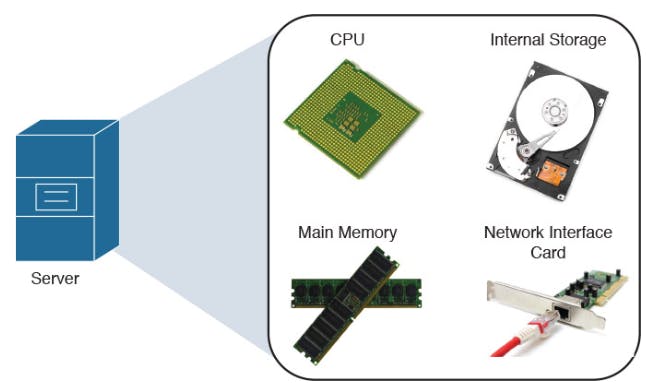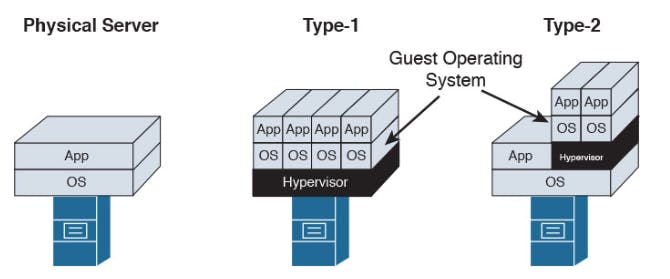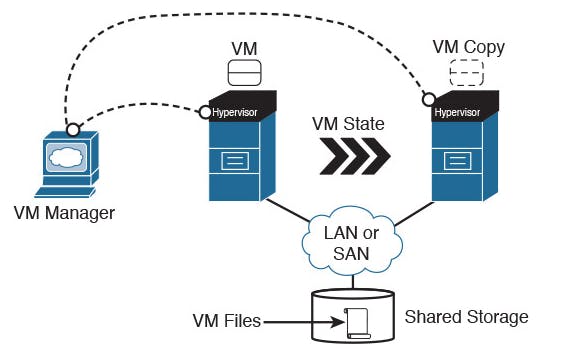Server hardware components are,
NIC, CPU, RAM, Storage Controller

Server operating system examples,
Microsoft Windows Server, Linux, FreeBSD etc
Advantages achieved through mainframe virtualization in early 1970s are,
- Legacy application support,
- User isolation
Disadvantages of server virtualization on x86 servers,
- Network provisioning
- Management cost decrease
Note :- Why did they introduce 64 bit computers? Because 32 bit architecture computers could only use 4 GB RAM as the maximum memory size.
Hypervisor is a software program that can create emulated hardware for installing another operating system. Used to create virtual servers.

Type 1 hypervisor examples,
- Linux KVM,
- Xen,
- Microsoft Hyper-V
The following identify a hypervisor and its corresponding VM manager,
- KVM and oVirt
- ESXi and vCenter
- KVM and OpenStack Nova
Virtual machine files,
- Virtual Disk,
- NVRAM,
- Swap Memory,
- Log
Facts about VM,
- VM high availability enables the restarting of the vm that were running on hosts that failed.
- Resource load balancing allows automatic host selection when you are creating a virtual machine.
- VM fault tolerance reserves double the resources a vm requires
- Live migration?
Transport of a VM between two hosts from a virtualization cluster with minimal disruptions in its guest OS and hosted applications.

A disruption in associated virtual machines expected in?
High Availability
A feature that enables cloud computing pooling characteristics is?
Resource load balancing.
